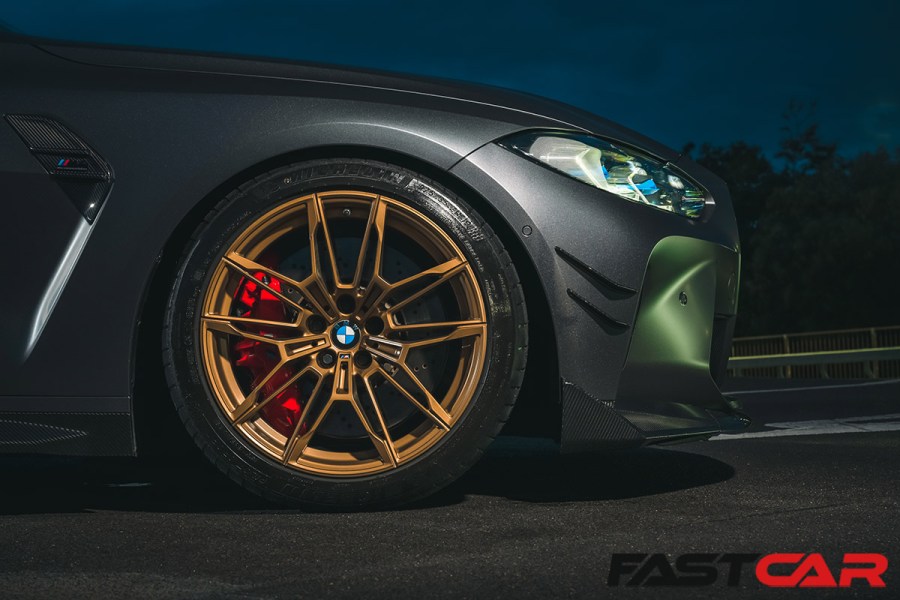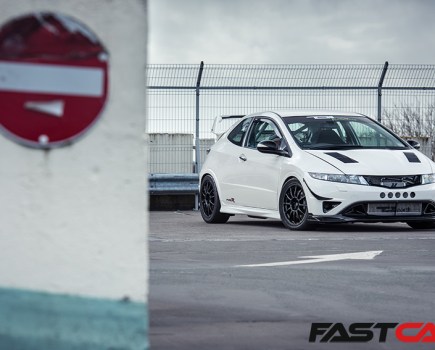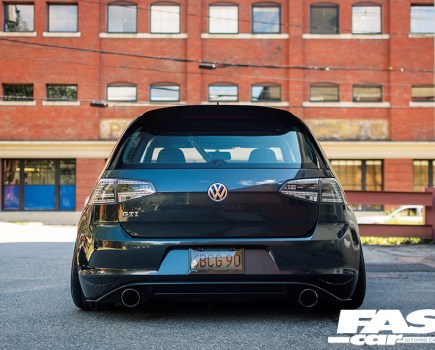Should you choose coilovers or air ride for your car? Well, that’s the big question when you modify a car. So, let’s get the full FC lowdown.
Right then, air ride for looks and practicality, coilovers for relatively cheap handling performance. That’s it, job done with your car suspension. What’s next?
Except of course, it isn’t. No, there’s a lot more than meets the eye when it comes these types of suspension systems and how you use them. But don’t worry because, as ever, we’re here to help you make an informed decision when choosing an epic chassis setup for your pride and joy.
So, let’s get busy weighing up the options with our guide to everything you need to know. It’s time to find out if you should go for coilovers or air ride.
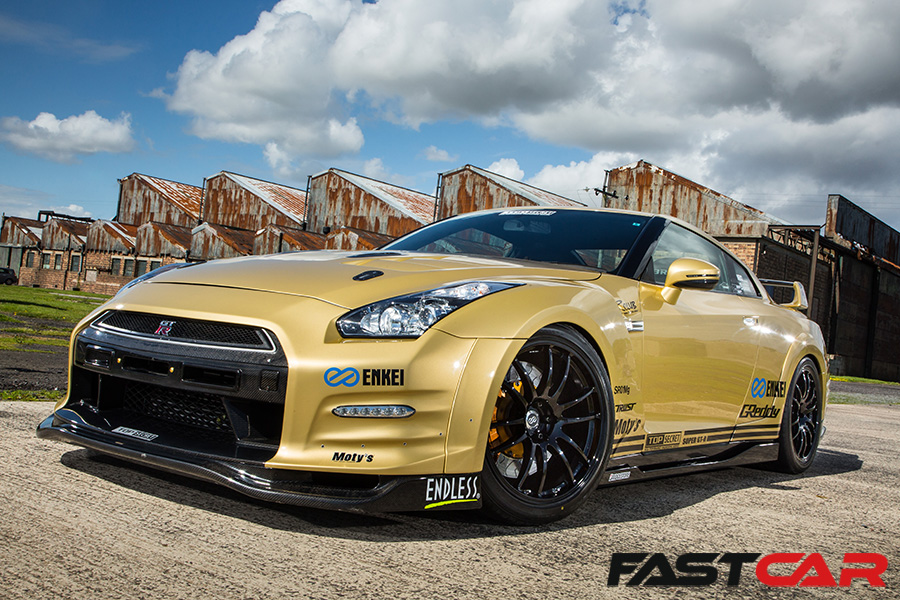
Coil-overs vs coilovers
Technically speaking, a coil-over suspension setup is exactly what it says on the tin. The coil (which is the spirally springy bit holding your car up) has a damper passing through the middle. It’s a common abbreviation of the more technical term coil-over-damper. So, with that in mind, the standard suspension on the front of most cars is also classed as coil-over suspension. As are all the other aftermarket suspension kits that include coil springs and dampers configured in this way.
When we talk about coilovers in tuning circles though, it’s the same deal in terms of configuration. Coilovers will always be coil-overs. But we’re referring to suspension systems which add in the all-important element of ride height adjustability.
Regardless of this – or any additional levels of adjustability the dampers may offer – coilovers still work in the same way as your standard suspension. The length of spring, and where it’s mounted on the damper, dictates the ride height. The stiffness of the spring affects the ride quality and handling, and the damper is there to control how the spring bounces back to its normal state after being compressed. This is why dampers are also known as shock absorbers. Have a look at our beginners guide to suspension to see the science behind how it all works.
Rear OEM coil-over suspension
The other thing to consider of course, is that not all cars have a coil-over setup on the rear. While you’ll find a traditional coil-overs on the back end of many a Japanese car, most European motors have separate springs and dampers at the rear. Technically speaking, you can’t call it a coil-over setup if the spring and damper doesn’t form and all-in-one strut. Although in the aftermarket these are still classed as coilovers, or at least an important part of your coilover kit. Again, the rear springs are the bit that dictate the height of the car, so your coilover kit will not only contain new rear springs and dampers, but an adjustable spring platform to set up the height.
In the case of coilovers – as opposed to air ride – even though they’re adjustable for ride-height, and in many cases damping, usually you can’t make adjustments on the go – so coilovers are generally referred to as a passive, or static, suspension system.
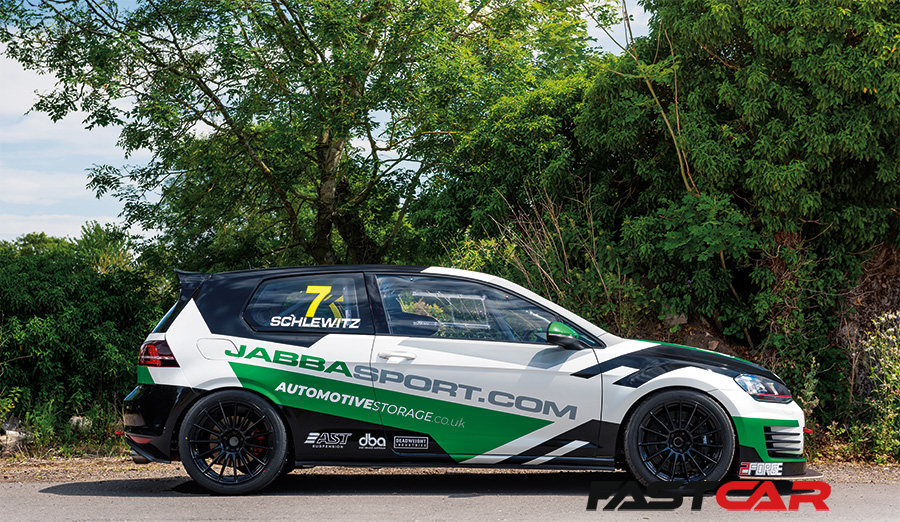
Racing vs fast road
First of all, there’s a reason that the vast majority of race cars utilize coilovers for out-and-out handling performance. It’s mostly about reliability, the range of adjustability and the disregard for comfort. On a road car though? Well, that’s an entirely different animal, and here in the real world you’ll have to treat it as such when choosing your suspension. If of course, you value any sort of ride quality.
While there are plenty of hardcore racing coilovers out there, and some will cost you and arm and a leg… and possibly the other leg, too. Most of the aftermarket coilovers you’ll find start life as race systems but geared specifically towards fast road use. After all, there’s a lot more road cars than race cars out there, right? If the big suspension firms only sold coilovers for motorsport use, you wouldn’t have any big suspension firms.
Fast road simply means beefing up the handling enough for a decent improvement for performance driving without completely killing the comfort. It’s also about having the capability to adjust the settings for the occasional jaunt on the circuit. Like on a race car, the idea is to hold the optimum chassis settings through the corners, and when braking or accelerating. The only real difference between road and race setups is how far you can push the system before the chassis geometry moves away from optimum. The longer you hold those settings, the harsher the ride is going to be.
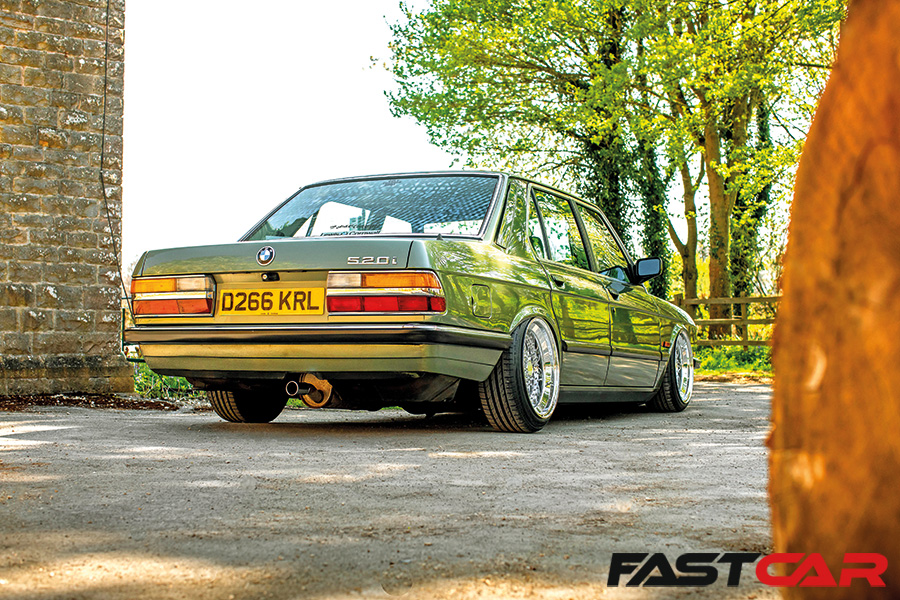
Performance vs compliance
On a nice flat circuit, suspension doesn’t have to absorb the sort of bumps you’ll find on the road. A super-stiff setup can hold the chassis geometry in place for as long as possible. In other words, race cars aren’t designed for comfort. Conversely, on the road you need a little compliance to allow the suspension to absorb the shocks and keep your car drivable. Soft wallowing suspension isn’t good for handling, but neither is suspension that’s too stiff.
The stiffness isn’t just down to the spring and damper itself, but also any bushes where they mount to the car. The stiffer they are, the stiffer your chassis will be, which is why you’ll find many race cars with solid, or rose jointed, bushes and top mounts. On coilovers designed for road cars though, generally these will have more complaint rubber or polyurethane bushes to help absorb larger shocks and stop all of them being transferred through the chassis and into the cabin. While a little stiffness is good for improving handling, it’s no good if it shakes your car to bits or makes driving it a nightmare. With coilovers it’s all about finding the right balance.
So, while fast road coilovers share many characteristics of the ones you’ll find in professional motorsport, they’re not the same thing. Generally speaking, race cars will have a drastically redesigned chassis that bears little resemblance to their road-going counterparts. These will include a whole load of special link arms and increased room under the arches to allow them to run as low as possible, all the while retaining the focused handling characterizes. Try lowering a car to the same degree for use on the road and it just doesn’t work.
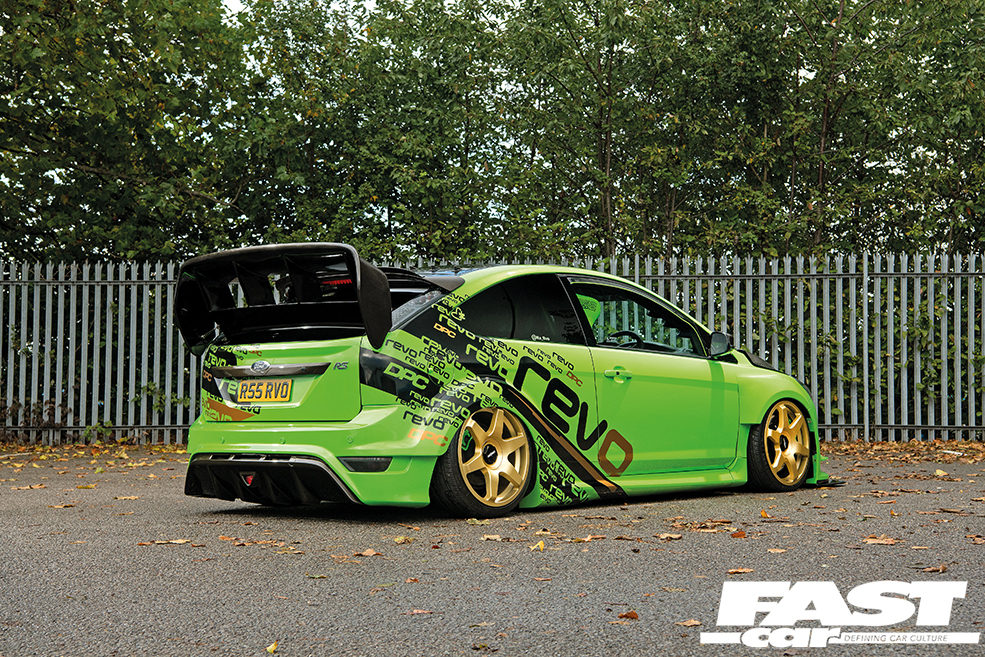
Are coilovers better than air ride?
The real question should be – are coilovers better than air ride for me? And the answer to that depends on what you’re planning to do with the car, not to mention what you want to spend.
There are – excuse the pun – ups and downs for both types of system. And, even if you’ve picked a set that’s nice and compliant, making it relatively comfortable for day-to-day driving. Or chosen a super-stiff set because you’re building a car solely for track use. You can still fall at the final hurdle when you’re setting up the ride height.
Now, it is entirely possible to slam your car into the weeds on coilovers, and many see rolling uber static lows as a badge of honor. But, while this school of thought no doubt makes you a warrior, it doesn’t mean that the handling performance will be any good. And besides, no matter how low you wind them down, you’re never going to get the sort of lows associated with air ride, chiefly because your car needs to move.
A sensible drop in ride height, however, will always lower the center of gravity enough for a marked improvement in handling and a more purposeful stance. In many cases, you’ll be able to fit wider wheels for better grip, too.
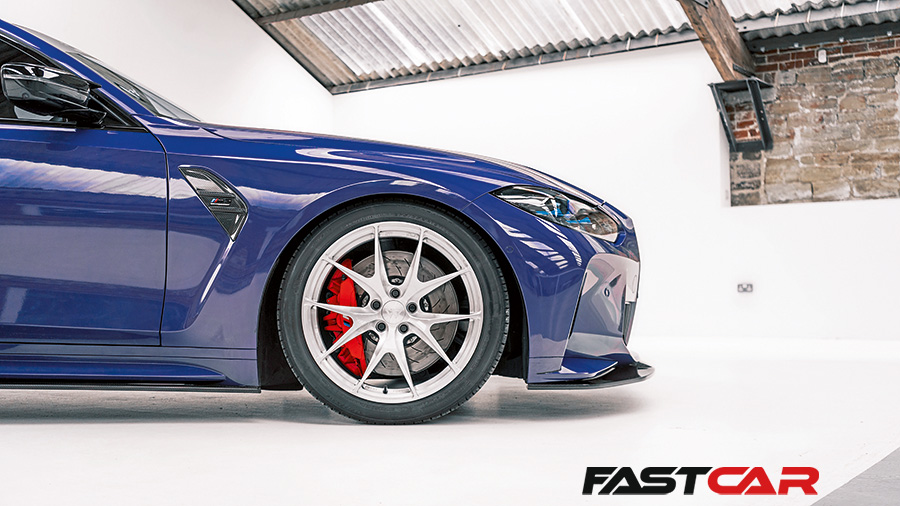
Are coilovers cheaper than air ride?
Unless we’re talking about seriously high-end systems for race use, it’s no secret that coilovers are more affordable than air ride systems. Not so much because of the struts themselves, but because all the other parts in the system, not to mention the fitting, can really add up.
But, while there are plenty of coilover bargains out there, going too cheap can also lead to trouble. Yes, if you’re looking to spend a just few hundred quid, you can bag yourself a set of coilovers. But ask yourself – do you really want them? In many cases the cheapest units will either improve the handling for a short time… right up until they break. Or not improve the handling at all. All the big suspension brands put a serious amount of R&D into making sure their fast road coilovers work as they should, and last for at least as long as your standard suspension components. Cheaper offerings out there won’t offer that. Then again, if you just want to slam your car, and you’re not too concerned with handling or comfort, it is your car, not ours. Although we’d never recommend it.
The golden rule for handling performance is to do your research for your particular car, and look for a quality brand with a good reputation. Coilovers are a bit like tires in that respect – if you’ve not heard of the brand in question, chances are they’re not going to be great for long lasting performance. From experience we’d say prices for a good set of coilovers start at around 7-800 pounds, and rise depending on the brand and spec.
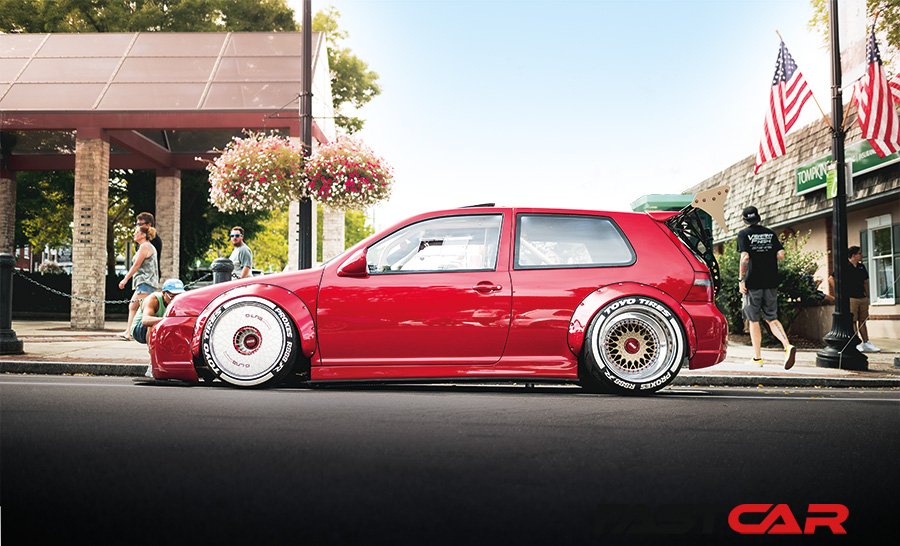
Will air ride improve handling?
Air ride is an example of active suspension, and that simply means it’s a suspension system where you can adjust the ride height from inside the car, at the touch of a button, in a matter of seconds.
Although this kind of suspension setup is mostly associated with showstopping looks – along with the practicality of being to raise your car for everyday hurdles such as speed bumps – modern air ride kits are usually built with performance in mind.
The simple truth is that most systems, when correctly installed, will be an improvement over your standard suspension. Just, think about it, if air ride made all cars handle horrendously or dangerously, there wouldn’t be so many cars on air ride, would there? And it’s not just the modified motors out there, plenty of HGVs, busses and more than a couple of prestige motors run air ride as standard. So, that should tell you everything you need to know about reliability, too.
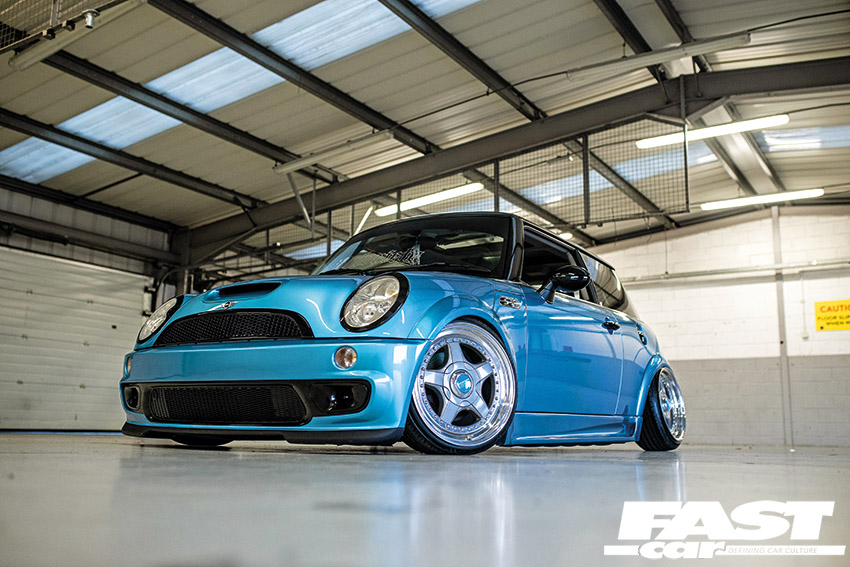
Progressive air springs
But, you may ask, how does air ride actually improve chassis performance? Well, it’s worth remembering that an air bag is technically known as an air spring. It may not look like your average coil of course, but it’s a spring none the less. It’s this part that sets the ride height, and the more air you pump in the higher the car lifts. Increasing the pressure also stiffens the spring to give a firmer ride, although this may not be quite as firm as the most hardcore set of coilovers.
Modern air springs are also progressive, just like the best coil springs. The more they compress under load, the stiffer they get, and this offers a dynamic spring rate for a vast handling improvement when braking, acceleration or taking corners like a demon. Modern bags are engineered for liner travel, too. They expand on the vertical axis, instead of simply blowing up like a balloon.
It’s also a fact that – just like with coilovers – the air spring is always combined with a damper to control how it bounces back after being compressed. Many of the best air ride systems out there feature fully adjustable shock absorbers – in some cases supplied by well-known coilover manufacturers – so, what you’re getting is the same sort of damping adjustability. Basically then, an air strut is a coilover, but with a bag instead of a coil spring.
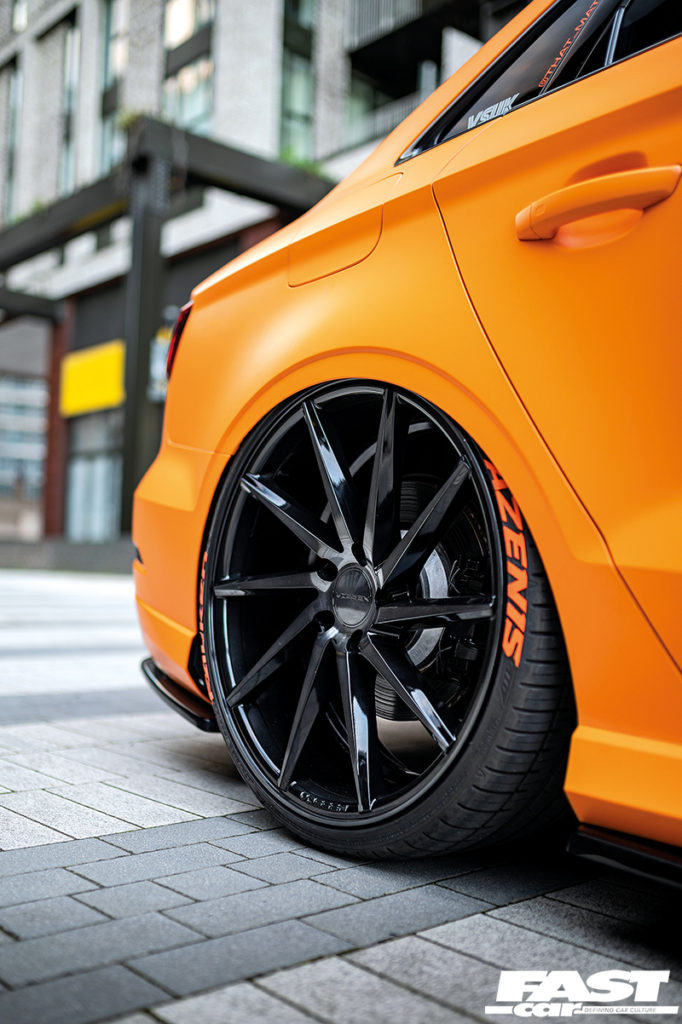
Is air ride better than coilovers?
So, now we know that – aside from the epic lows and the fact that, in the opinion of most people with eyes, nothing looks quite as good as a car slammed all the way to the floor – you can use air ride for a significant performance upgrade over standard suspension. But, what’s the extent of the handling improvement can you get? And where does that leave air ride in comparison to coilovers? Is air the better option?
Well, again it’s down to how you want to use your car. If it’s purely for looks, and you’d prefer to go lower than a purposeful racing stance, then yes, it probably is. Alternatively, of you want to run super low on the road with a comfortable ride, and still get on your drive at the flick of a switch, then yes, it definitely is. If you’re looking to build a car that’s great for the occasional track day and everyday driving on the road? Well, that one could go either way. And, if you’re putting together a racer that’s going to spend its whole life on the track, then probably not, coilovers may have a bit of an edge. Like we’ve already said, there’s a reason out-and-out race cars tend to utilize coilovers.
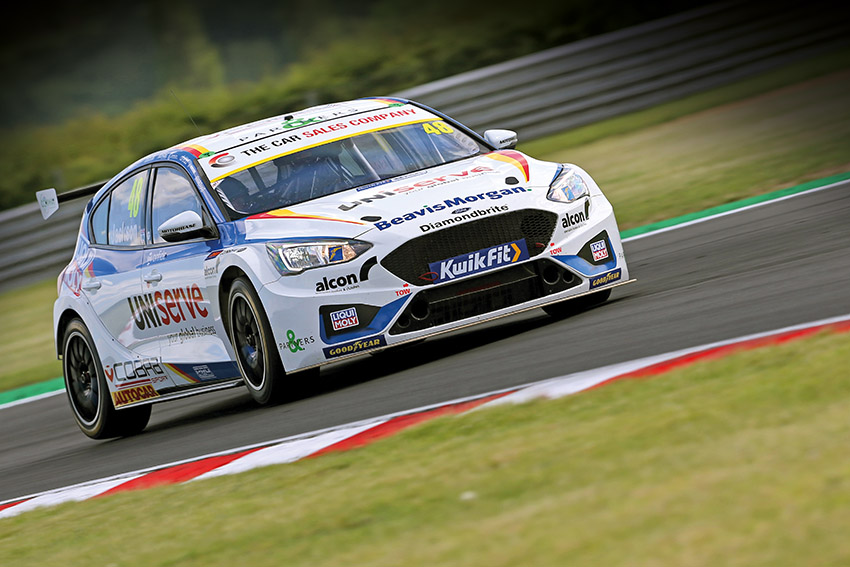
Racing cars vs road cars
That’s not to say that air ride doesn’t work in motorsport, it’s has been used on many a drag car, track car and even in NASCAR from as far back as the 1950s. But the extent of the adjustability and the old school reliability of steel hardware have made coilovers infinitely more popular for racing.
There’s also the question of durability. Race cars take a pounding every time they go out on the circuit, after all, that’s their job. And while there’s no doubt that air ride is durable, and extremely reliable, for the road, coilovers can arguably take more of a spanking for longer. All parts wear out faster on the track, but coilovers tend to be more heavy duty than bags, and they’re likely to be cheaper to replace when they do fail. So, while you can build and out-and-out track car on air ride, chances are that you won’t. For a road-going weekend track toy though? Well, that’s a different story.
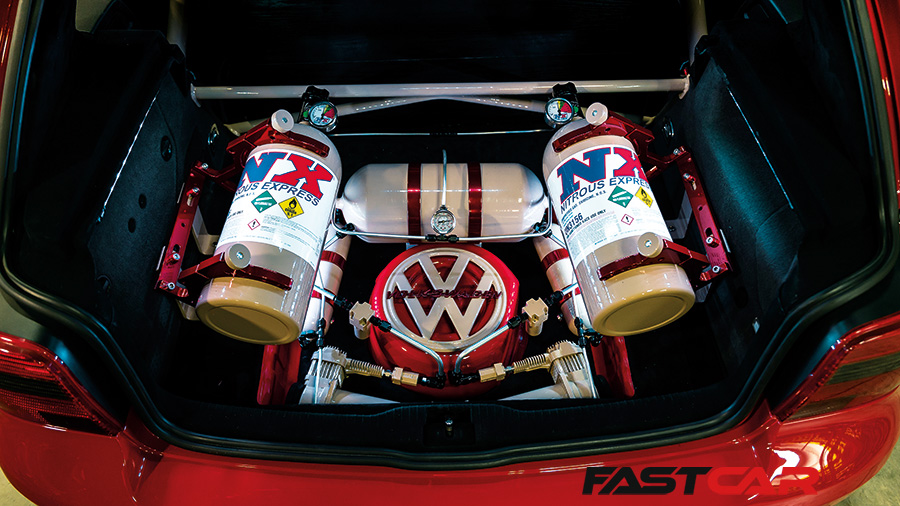
Are there any downsides to air ride?
Yes, there are downsides to everything. The three main ‘cons’ for air ride are the cost, the ease of installation, and the availability of parts.
First of all, a decent air ride kit will easily cost you four or five times the price of a set of decent coilovers. Again, there are a few cheap kits out there, but for the best results you’ll need to go for a well-established and respected brand. And only then can you hope that they’ve actually developed and fully-tested a kit for your car. There’s not anywhere near as many air ride applications out there as there are coilover kits.
But, even with the best modern, model-specific air ride kits, they’ll never be as easy to fit as coilovers, simply because there’s more parts to consider. Aside from the struts themselves, you’ll be needing an air tank, a compressor, some kind of management to run the system, and then you’ve got to plumb it all in. You’d think that weight of all these extra bits and pieces would be an additional headache, but in reality that’s pretty negligible, especially for a road car. The main issue is that air ride takes longer to fit and, assuming you’re not doing the job yourself, that will inevitably mean more costs.
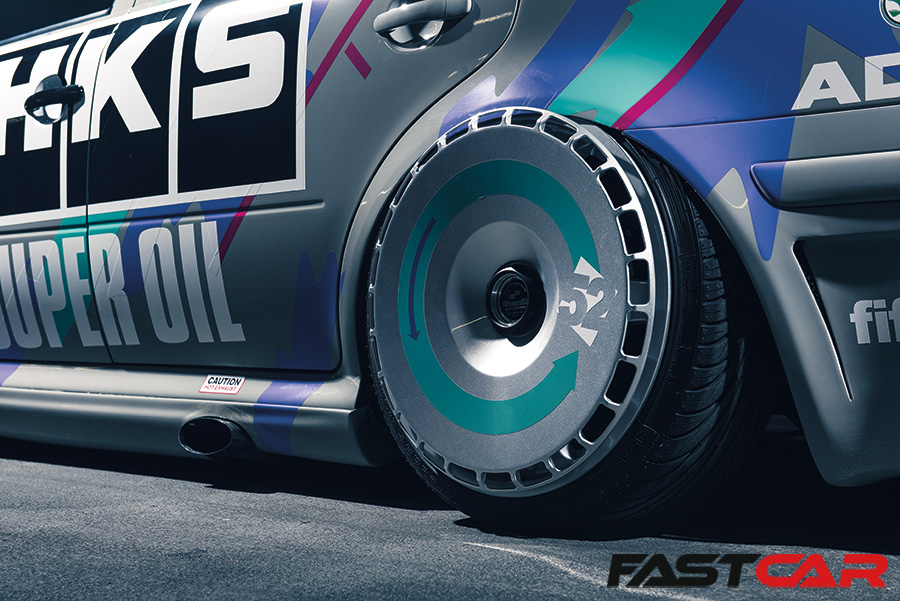
Verdict: Coilovers vs air ride
So, the answer to the question of coilovers vs air ride seems to be pretty complex then, but don’t worry because in reality it’s actually the simplest answer of all. Both are great, both have their uses, and both have their downsides, too. But the system you choose will always depend on exactly what you’re looking to achieve. Everyone’s an expert here and everyone has an opinion on the subject, that almost goes without saying nowadays. But just remember that there’s only one opinion that really matters when it comes to your car, and that opinion is yours.

